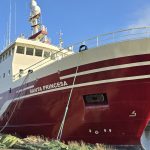According to the press release the horse mackerel are mainly canned within Namibia and in South Africa, and are chiefly distributed to the African markets (with bulk exports to the Democratic Republic of Congo (DRC)). A significant volume of horse mackerel as well as anchovy is converted into fishmeal.
For the development of pilchard the government has set up stringent measures and management plans, which, it is believed, will lead to the long term sustainability of the stock. This includes limiting pilchard by-catch in all other fishing industries to no more than 3 percent of total landings.
In the 2009 fishing season the TAC improved slightly to 17 000 and further to 25 000 tonnes in 2010. Having recovered to some extent, the industry still remains but a fraction of the size it once was. However, there has also been an overall reduction in the size of captured fish and this indicates that the fishery was under pressure.
The main destination of horse mackerel exports is Democratic Republic of Congo (DRC) and other African countires. These are sold mainly in whole frozen, fresh or chilled form and as fishmeal. Namibian frozen horse mackerel rose by 24 percent from USD 65 million to USD 104 million in 2009. In the first quarter of 2010, horse mackerel exports were 27 797 tonnes and were valued at about USD 33 million, while in the second quarter of the same year, 25 473 tonnes were exported, valued at about USD 41 million.








